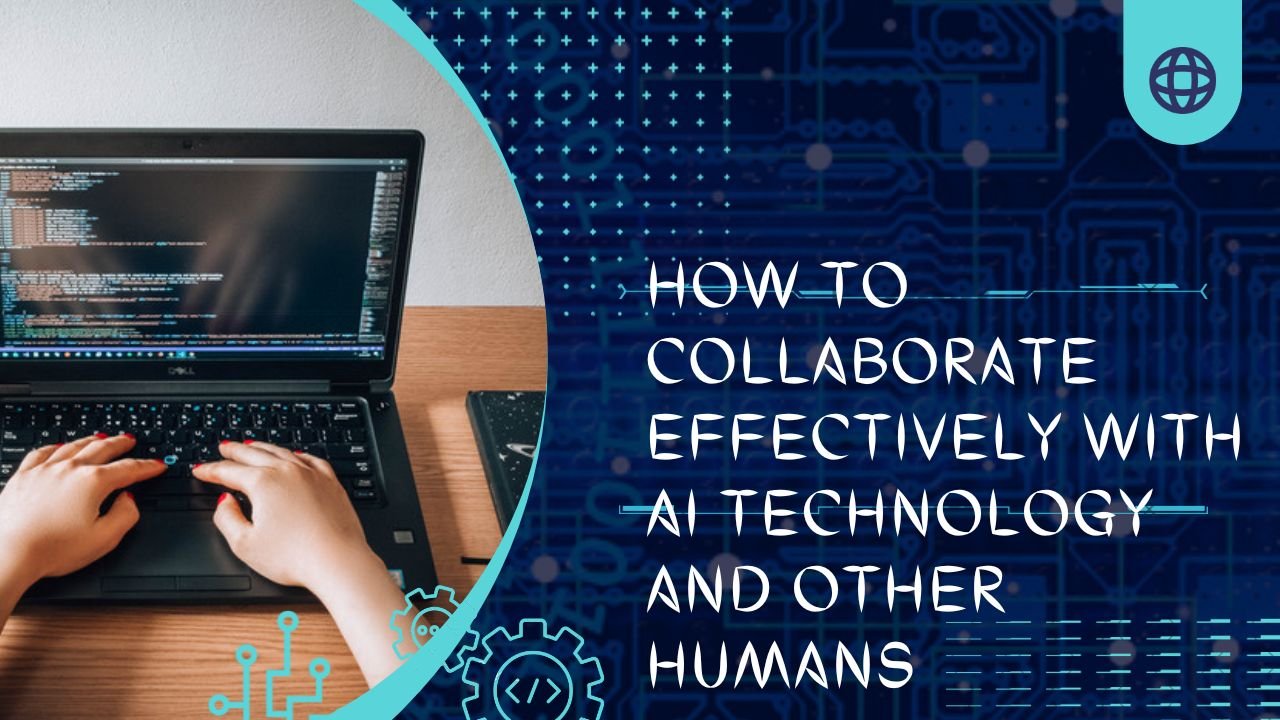How to Collaborate Effectively with AI Technology and Other Humans

How to Collaborate Effectively with AI Technology and Other Humans
Artificial intelligence (AI) technology is not only transforming how we work, but also who we work with. AI technology can augment, complement, or replace human capabilities, creating new forms of collaboration between humans and machines, as well as among humans. However, collaborating effectively with AI technology and other humans requires some skills, strategies, and mindsets.
In this blog post, we will explore some of the best practices for collaborating effectively with AI technology and other humans, and how to benefit from the synergy of human-machine and human-human interactions.
Understand the strengths and limitations of AI technology and humans
AI technology and humans have different strengths and limitations when it comes to performing tasks, solving problems, or making decisions. AI technology can excel at tasks that involve speed, accuracy, scalability, or consistency. Humans can excel at tasks that involve creativity, empathy, intuition, or ethics. By understanding the strengths and limitations of AI technology and humans, we can leverage their respective advantages and compensate for their respective weaknesses.
For example, when diagnosing a patient’s condition, a doctor can use AI technology to analyze large amounts of data, identify patterns, and generate hypotheses. The doctor can then use their human judgment, experience, and communication skills to validate the hypotheses, explain the diagnosis to the patient, and prescribe the best treatment.
Establish clear roles and responsibilities for AI technology and humans
AI technology and humans can have different roles and responsibilities when collaborating on a task, project, or goal. AI technology can have a supportive role (assisting humans), a supplementary role (completing humans), or a substitutive role (replacing humans). Humans can have a supervisory role (overseeing AI technology), a complementary role (adding value to AI technology), or a symbiotic role (cooperating with AI technology). By establishing clear roles and responsibilities for AI technology and humans, we can avoid confusion, conflict, or redundancy.
For example, when writing a report, a writer can use AI technology to generate an outline, conduct research, or check grammar. The writer can then use their human skills to refine the outline, synthesize the research, or add style. The writer can also monitor the performance of AI technology and provide feedback or corrections.
Communicate effectively with AI technology and other humans
AI technology and humans can have different ways of communicating information, feedback, or emotions. AI technology can communicate using data, algorithms, or natural language. Humans can communicate using words, gestures, or expressions. By communicating effectively with AI technology and other humans, we can ensure mutual understanding, alignment, and trust.
For example, when working on a design project, a designer can use AI technology to generate or evaluate different options. The designer can then communicate their preferences, criteria, or goals to the AI technology using clear and specific instructions. The designer can also communicate with other human collaborators using empathetic and respectful language.
Learn continuously from AI technology and other humans
AI technology and humans can have different ways of learning and improving their skills, knowledge, or performance. AI technology can learn from data, feedback, or self-correction. Humans can learn from experience, observation, or reflection. By learning continuously from AI technology and other humans, we can enhance our capabilities, adaptability, and growth.
For example, when playing a game, a player can use AI technology to analyze their moves, strategies, or outcomes. The player can then learn from the AI technology’s suggestions, recommendations, or explanations. The player can also learn from other human players by watching their gameplay, asking questions, or sharing tips.
Conclusion
AI technology and humans can collaborate effectively by understanding each other’s strengths and limitations, establishing clear roles and responsibilities, communicating effectively, and learning continuously. By collaborating effectively with AI technology and other humans, we can achieve better results, satisfaction, and impact.
